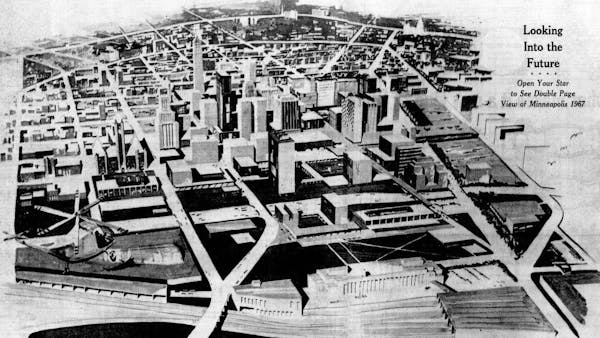Fast-forward three decades into the future: What will the Twin Cities look like?
New projections describe a metro area population that will be larger, more diverse and older than today, a continuation of prior trends that have been transforming Minnesota as a whole.
That's based on the newest Metropolitan Council regional forecast, which predicts the seven-county metro area will reach 4 million people by 2050 – a jump of more than 800,000 residents from now.
However, this quarter increase in population would be a slowdown compared with the roughly 40% jump in residents from 1990 to 2020 that propelled the Twin Cities over the 3 million mark.
Released every two years, these forecasts seek to provide a roadmap for how the seven-county region might be shaped the next 30 years. Unpredictable events can somewhat derail these predictions, like last year's COVID-19 recession that temporarily wiped away many thousands of jobs.
Despite those unforeseeable crises, the Met Council expects economic growth will continue alongside population growth (they are closely intertwined), as the region steadily adds residents through stabilizing birthrates and international and domestic migration.
Populations of color are expected to be the main driver of growth over the next three decades. Black, Asian and Latino populations in the metro are already rapidly growing, and are expected to more than double by 2050, with people of color eventually comprising about 44% of Twin Cities' residents – a jump from about a quarter nonwhite currently, according to recent American Community Survey estimates.
"People moving to the Twin Cities look a lot more like the rest of the nation, and maybe the rest of the world," Todd Graham, the Metropolitan Council's principal forecaster, told a recent council meeting while reviewing these predictions.
International immigration alone is expected to add about 312,000 new residents, a vast majority of whom are expected to be people of color. This is a significant increase in net international migrants compared with the previous three decades.
Graham said the diversification of the Twin Cities is an ongoing trend, and that white populations are likely to peak by about 2030.
This decline in white population is tied to age, as resident senior citizens aged 75 or older are expected to triple, while age groups such as Baby Boomers and Generation X continue to gray. By 2050, nearly a quarter of the Twin Cities' population will be over age 65.
These trends reveal a metro area that's more populous, where older adults are overwhelmingly white, with schools and workforces being more racially and ethnically diverse, as growing employment and economic opportunity attract more migrants from across the country and world.
"This isn't something new to the Twin Cities, our diversity has been growing particularly since the 1990s," said Susan Brower, Minnesota's state demographer. "Schools and other institutions have already experienced what it is to flex and change around new populations."
Brower said the impact of aging on the economy is fairly new.
"We're just sort of halfway through this process [of the baby boomers aging and retiring]," she said. "We're feeling it initially in labor force growth, and that has implications for economic growth overall."
Of course, forecasts can change for a variety of reasons, including updates to data, adjustments to demographic assumptions, or just major unforeseen events.
"Year 2020 really was an object lesson that there are wild things that can happen outside of model space," Graham told the Council. "The world itself can change, and that's a pretty good reason for revisiting this."

Want to share info with the Star Tribune? How to do it securely

'Safe recovery sites' would offer syringes, naloxone and more to people using drugs. The plan could be in peril.
New Minnesota GOP leaders seek peace with party's anti-establishment wing

Who is Republican Lisa Demuth, Minnesota's first House speaker of color?

